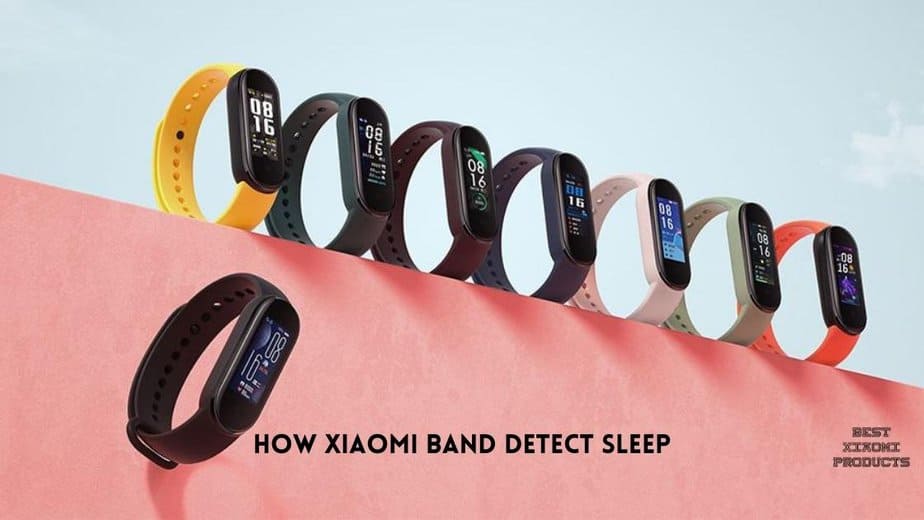A good night’s sleep is crucial for both physical and mental well-being. But how do you know if you’re actually getting the quality sleep you need?
Enter the Xiaomi Mi Band, a popular fitness tracker that boasts sleep tracking capabilities.
This article delves into the world of Mi Band sleep tracking, exploring how it works, its accuracy in detecting deep sleep and other stages, and what it can tell you about your sleep patterns in 2024.
Whether you’re a seasoned athlete or simply looking to improve your sleep hygiene, understanding the Mi Band’s sleep tracking features can be a valuable tool in your journey towards better rest.

Here’s how Xiaomi band detects sleep;
The Xiaomi Band utilizes its built-in accelerometer and heart rate monitor to analyze sleep patterns.
During deep sleep, the band measures movement to determine the quality of rest. Additionally, a slower heart rate is indicative of the REM sleep stage.
However, it is important to note that the accuracy of this data is around 78%. While the band provides useful insights into sleep stages, it does not track the duration it takes for a user to fall asleep.
Despite these limitations, the Xiaomi Band still offers valuable information about sleep quality and can assist users in understanding their overall sleep patterns.
How Xiaomi Band Detect Sleep
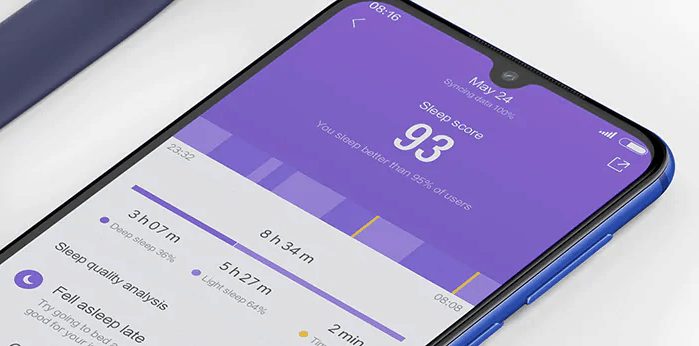
I mean honestly, if the Xiaomi smart band can actually track our sleep that would be pretty cool. So, I decided to act on this conundrum and decided to jump into the rabbit hole of wearable tech and sleep tracking. And I finally found out How Xiaomi Band Detect Sleep:
The Xiaomi Band has certain sensors like Accelerometer, Gyroscope, and PPG (Heart Rate Sensor) to track body movements and heart rate to determine whether the user is in a light sleep stage or deep sleep stage.
The latest Mi Band 7 Pro also uses respiratory data to determine the REM sleep cycle of the user and provide comprehensive sleep patterns and health data.
Most importantly, it can allow the user to improve their quality of sleep and contribute to optimizing their health.
So, why is it important to keep a track of your sleep?
- Tracking your sleep essentially leads to improving your sleep and thus your health. By tracking your sleep you can sleep at the right time and sleep for the right amount of time.
- Most people actually sleep for far less amount of time than their body requires. Doing this on a consistent basis leads to adverse health effects. So, using a sleep tracker like the Xiaomi Mi Band helps keep a track of how much time your body actually deserves.
Updates to How Xiaomi Band Tracks Sleep
1. Enhanced Sleeping Monitoring Algorithm: The latest Xiaomi smart wearables, including the Mi Band 8 Pro, Xiaomi Watch S3, and Xiaomi Watch 2, boast an enhanced sleep monitoring algorithm that integrates blood oxygen and breath data. This allows for a more comprehensive analysis of sleep patterns and potentially improves accuracy in detecting sleep stages like deep sleep and REM sleep.
2. Sleep Animals Feature: The Mi Fitness app, used with some Xiaomi bands, now offers a new “Sleep Animals” feature. By analyzing your sleep data for a week, the app assigns you a “Sleep Animal” that best represents your sleep quality and patterns. This playful approach can make sleep tracking more engaging and potentially encourage better sleep habits.
3. Additional Features: While not directly related to sleep tracking, features like improved step tracking accuracy and stress monitoring through heart rate variability analysis can indirectly contribute to a more holistic understanding of factors affecting your sleep.
What Sleep Parameters does the Mi Band track?
For example, the Mi Band 5 estimates the amount of time the user spends in all three stages of sleep. This band tracks the user’s sleep while the data is recorded in the Mi fit app.
This can help identify if the user is suffering from sleep issues. It specifically analyses how much time you spend in each stage of sleep.
- Basically, this band will provide the user with information regarding their sleep condition and most importantly it will also tell the user how to improve their sleep. The information and sleeping habits are represented in a pictorial graph.
The Xiaomi Band specifically reads the three stages of sleep and gathers various data from the duration the user spends in each sleep stage.
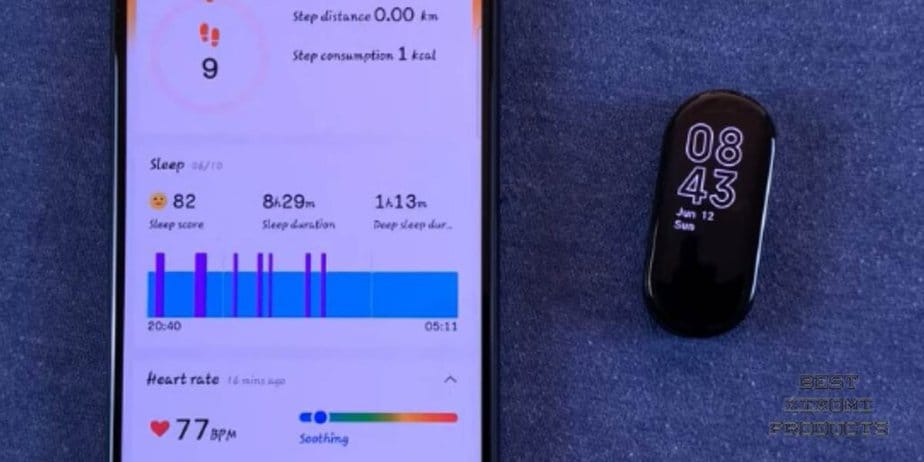
How the Mi Band tracks Light Sleep
The Mi Band 3, 4, and 5 track light sleep by using a combination of an accelerometer and a heart rate sensor. During light sleep, the body slows down and movements are extremely minimal.
As you drift between being awake and asleep, your heart rate also tends to slow down. But only by a bit.
The Mi Band captures this first phase of the sleep cycle by reading the minimal to zero movements and the slow drop in heart rate. Light sleep is known to help with both physical and mental recovery. This is why power naps work wonders.
How the Mi Band tracks Deep Sleep
Once, you’ve been in the light sleep stage for a few hours, you gradually drift off into deep sleep. This heavy sleep shuts off both the body and mind, which is why it’s harder to wake up.
During this sleep stage, the body will not move and will be extremely unresponsive to external stimuli.
Most importantly, the heart rate drastically slows down. The Mi band captures both these parameters and understands that the body has transitioned into the deep sleep stage.
Deep sleep helps with psychological recovery and muscle recovery. This is also the time when the body supports the immune system.
How the Mi Band tracks REM sleep
REM sleep or Rapid Eye Movement Sleep is the final stage of our sleep cycle. Most importantly, this is the stage of sleep where we dream.
While the Mi Band 3 and 4 can’t track this stage, Xiaomi’s latest Mi Band 5 makes use of the Accelerometer, Gyroscope, PPG sensor, and respiratory data such as blood oxygen to track the REM cycle.
Once, the user wakes up, they are notified by the Mi Fit app as to the status of their sleep cycle. To access this information all the user has to do is click on the notification or run the Mi Fit app.
- A human being goes through multiple cycles of these stages and the number depends on the individual. Everyone’s optimal cycle is different. So, a comprehensive tracker like the Mi Band 5 is extremely useful.
- You simply have to click on the tile that mentions the duration of sleep to get specific details regarding the length of your sleep, sleep quality analysis, and an overall sleep score. The Xiaomi Tracker also compares your sleep pattern with other people for an objective result.
- Other than asking you how you feel for even accurate recommendations, the Mi band also lets you access your sleep statistics in terms of days, months, and years. This comprehensive information will allow you to improve your sleep in a systematic and gradual fashion.
Mi Band 5 Features

Although the Mi Band 5 hasn’t had a significant upgrade when compared to its predecessor. There are, of course, some changes.
For example, the Xiaomi Mi Band 5 has a display area that’s larger by Mi Band 4 by 20% which allows for more information to be displayed.
Most Importantly, it is equipped with more sports modes than its predecessor. You can also get the Mi band 5 in Multiple colors.
- The Mi Band 5 has a larger color screen of 1.1″ with a 126 x 296 RGB resolution. Of course, it’s fully touch-enabled with a dynamic dial display. This smart band also comes with over 100+ theme dials that can be customized. This first-time feature helps create a personalized experience.
- The Mi Band 5 is equipped with 5 new professional sports modes to tackle all sorts of fitness in various environments. These 11 Sports modes are: Outdoor running, Outdoor Cycling, Indoor Cycling, Walking, Swimming, Elliptical machine, Treadmill, Skipping rope, Yoga, Rowing machine, and Free training.
- Although Fitness is the core competency of the Mi Band Smartwatches, other features have also been added. Now you can remotely click photos with this smart band and customize the interface to access your favorite play store apps.
- This smart band has a 125 mAh Battery which can easily last for 14 days with a 2-hour charge. However, this Band has improved the Charging process, by including a magnetic charging cable that easily connects to the device without having to remove the tracker from the band like the previous versions. Xiaomi has introduced this magnetic charger across all its smartwatches.
The Mi Band 5 is equipped with improved health and fitness sensors that have boosted accuracy to an unimaginable degree. Most importantly, this band features a PAI (Personal Activity Intelligence) feature which tells you the specific body motion to follow to take control of your heart rate.
For European Sellers – Click Here!
How Accurate is the Mi Band Sleep Tracker?
The Xiaomi Band uses an accelerometer and heart rate sensor to detect and track your sleep. When you are sleeping your body is stationary and your heart rate is also settled, Xiaomi uses this information to know that you are sleeping.
While in theory sounds simple and easy to detect and track, in practice it is hard. This is because everyone sleeps differently and we all make small movements while sleeping. This makes it hard for the Xiaomi Band to accurately detect and measure your sleep.

When it comes to the amount of time slept, Xiaomi is off by a few minutes to an hour sometimes. So there will be differences between your real sleep time and the calculated one from the Xiaomi Mi Band.
Similarly, the Mi Band 6 sleep tracking accuracy for the number of times you wake is not accurate either. The band considers movement and any high activity as a period that you are awake.
So if you are someone who rolls around in their sleep, or snoozes the alarm a few times, then the number of times you actually woke can get skewed. This is why the number is almost always high with the Xiaomi Band.
And finally, the sleep score on the Xiaomi Band is also something that is high compared to other bands. The Xiaomi Band is generous when it comes to giving out a sleep score.
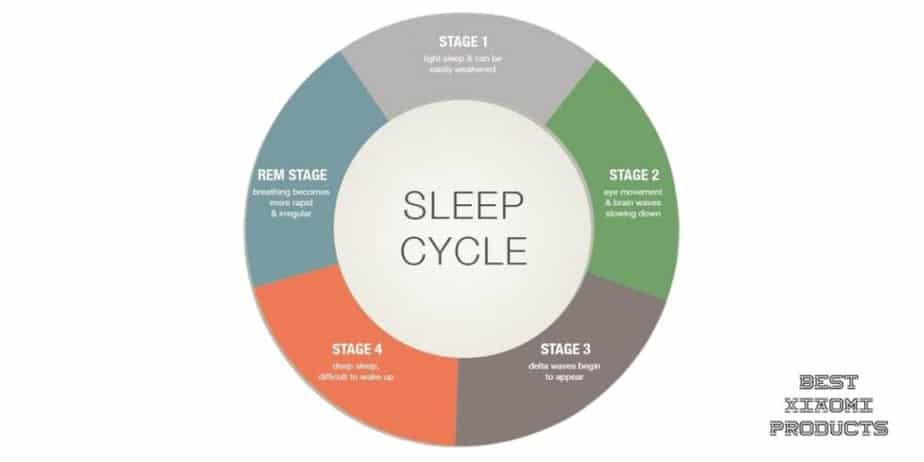
For a 6 Hour 50 Minute sleep session, with 2 minutes of awake time (not correct), the Mi Fit sleep score was 95, which is too high. So the Mi Band 6 sleep tracking accuracy is not the best but at the same time, it is far from the worst either.
The Xiaomi Band sleep tracking accuracy is not that great when compared to a traditional sleep tracker like a Polysomnography machine.
But when compared to sleep trackers like Fitbit, the Xiaomi band is slightly better but not as good as the Fitbit. The sleep tracking accuracy rate is around 70% for the Mi Band.
With the current technological limitations and available data, Xiaomi does a good job, but there is a lot to improve.
While the Mi Band is generous with its scores, its competitors like FitBit and Withings are too harsh. Xiaomi can surely do better, so hopefully, the next generation offers better accuracy.
How to use Xiaomi Band’s sleep tracker?
Step 1 Open the Mi Fit app on your Xiaomi phone. If you don’t have the app, download it.
Step 2 Tap on Profile.
Step 3 Now, tap on your device name, for example, Mi Band 4.
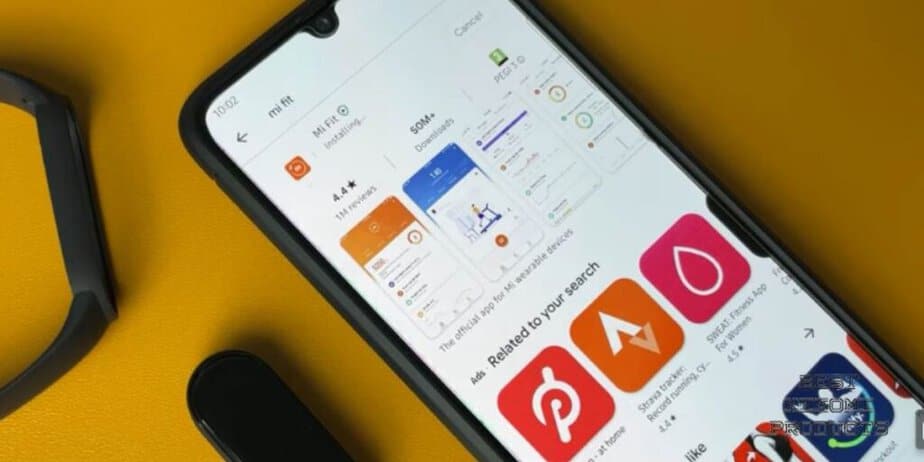
Step 4 Scroll down and tap on Heart Rate Detection.
Step 5 Now, tap on Detection Method.
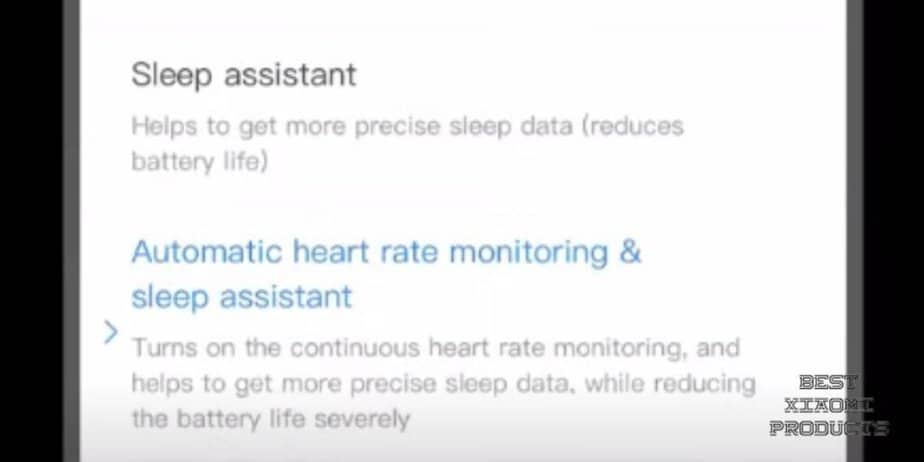
Step 6 Then, select Sleep Assistant.
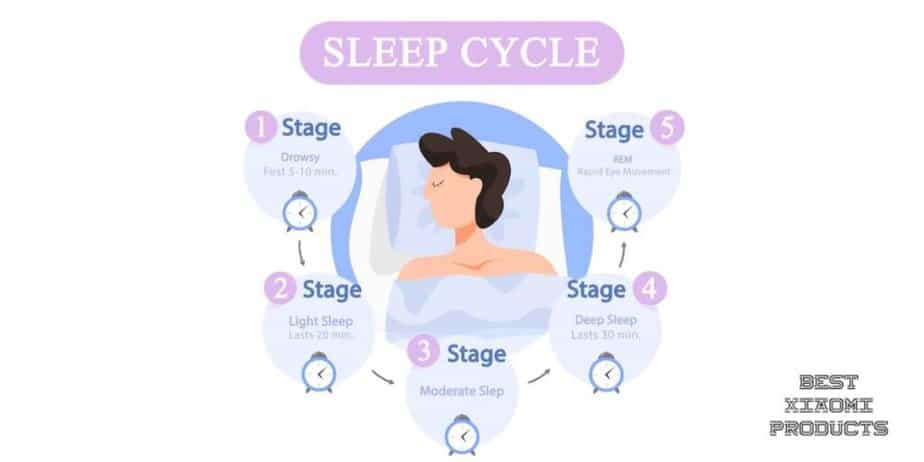
Step 7 Accept the battery life terms & click OK.
Step 8 Now go to the main screen to see Sleep data.
Check out Mi Band 6 Unboxing here
How to Activate Mi Band Sleep Tracker
To activate the sleep tracker all you have to do is follow these steps.
- Run the Mi Fit app on your smartphones
- Click on your Mi Smart Band 3, 4 or 5
- Once, you’ve opened the user interface, tap on the heart rate monitoring feature.
- On the heart monitoring menu, click on the automatic heart rate monitoring and sleep assistant
- Turning this feature on.
- Once, you go to sleep, you can expect your Mi Band to track your sleep patterns.
Before your go to sleep make sure that the band is tight but obviously not tight enough to prevent blood flow. Also, make sure both the heart rate and well the sleep assistant options are enabled.
How Does the Mi Smart Band 7 Pro Track Sleep?
When it comes to sleep tracking, the Mi Smart Band 7 Pro has got you covered. With this smartwatch, you have the option to choose between basic and advanced tracking modes, allowing you to tailor your sleep monitoring experience according to your preferences.
The advanced sleep tracking feature of the Mi Smart Band 7 Pro offers some impressive capabilities. It includes monitoring your heart rate throughout the night, giving you valuable insights into variations in your heart rate during sleep. This information can be helpful in identifying any abnormal heart rate patterns that may occur while you are asleep.
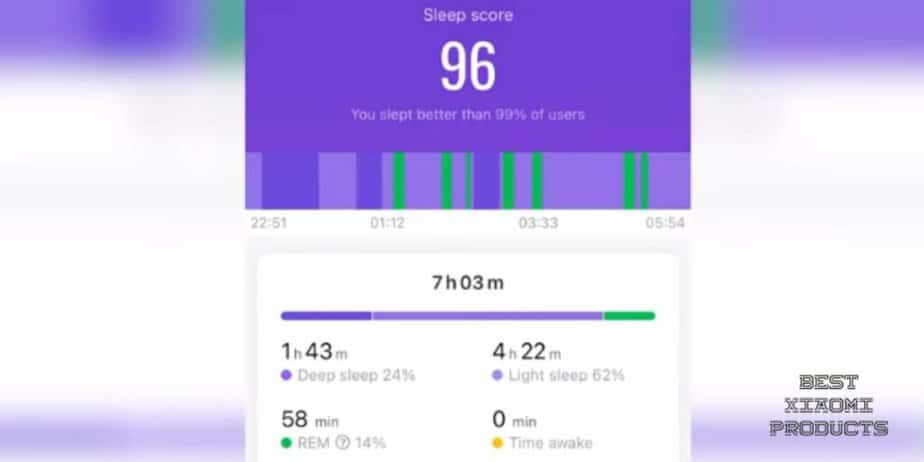
Another noteworthy feature is the device’s ability to detect REM sleep, which is a crucial stage characterized by rapid eye movement and increased brain activity.
By tracking REM sleep, the Mi Smart Band 7 Pro helps you gain a more comprehensive understanding of your sleep cycles. Additionally, it also monitors your breathing patterns during sleep, adding another layer of valuable information to your sleep tracking data.
When it comes to reliability, this smart band doesn’t disappoint. It accurately detects both your sleep and wake phases, ensuring that even your daytime naps are accounted for.
The device precisely identifies deep sleep, light sleep, and REM sleep, breaking down your total sleep time into these individual phases.
Visualizing your sleep data is made easy with the graphical representations provided by the Mi Smart Band 7 Pro. You can view your sleep patterns not only for a single night but also track trends over extended periods, such as a week or a month.
These detailed graphs enable you to identify long-term patterns in your sleep quality and make informed decisions about your sleep habits.

While the device displays basic sleep metrics, such as average heart rate and blood oxygen saturation, on its own, for a more in-depth analysis, you’ll need to utilize the smartphone app. The app offers a comprehensive breakdown of your sleep data, presenting detailed insights and metrics that can help you gain a deeper understanding of your sleep patterns.
It’s important to note that the Mi Smart Band 7 Pro does not include a smart alarm function. This means it doesn’t have the capability to wake you up during a light sleep phase, minimizing disruptions caused by waking up during deep sleep. While this feature may be missing, the device still provides a range of other valuable sleep tracking capabilities that contribute to a comprehensive sleep monitoring experience.
How Xiaomi Band Detect Sleep – FAQs
Does Mi band 4 track sleep during the day?
No, the Mi Band 4 doesn’t track sleep during the daytime. So you cant track daytime naps if you own a Mi Band 4. Check out more about how Xiaomi band detect sleep in our article.
Does Mi Band 6 detect naps?
The Mi Band 6 can detect naps even daytime naps. The only condition is that the nap should be longer than at least 30 mins. If you take short power naps, then your Mi Band 6 won’t detect them. Check out more about how Xiaomi band works in our article.
Can Mi Band detect sleep apnea?
The Mi Band 6 during the launch was touted to e able to track sleep breathing quality, but the feature might not be useful as it is still in Beta and we don’t know how accurate it is yet. Check out more about how Xiaomi band detect sleep in our article.
Should I wear Mi band while sleeping?
If you want to track your sleeping patterns then you must wear the Mi Band while sleeping. In fact, it’s very useful when it comes to tracking your sleep cycle/pattern. It can give you comprehensive data regarding your sleep quality allowing you to improve your sleep and health. For this, you have to wear it every night to bed. Check out our guide on How Xiaomi Band Detect Sleep for more details.
Is it Safe to wear Xiaomi Band when Sleeping?
Yes, it is safe to wear your Xiaomi band during sleep. In fact, the band can only track sleep if you are wearing it. Just make sure that you don’t wear the band too tight or too loose. It should be snug and comfortable to wear.
How does Mi band know I am sleeping?
Mi Band knows you are sleeping when you activate the sleep tracker and your movements are limited which is checked by the accelerometer. It also uses the heart rate monitor to figure out if the user is sleeping. A slower heart rate is considered to be sleeping.
How does Mi Fit Calculate Deep Sleep?
Deep sleep is tracked using the same accelerometer. The assumption that the Mi Fit app makes is, when there is lesser movement, then the user is in deeper sleep which is not true. The deep sleep calculation of the Mi Fit is not accurate and should not be considered medically relevant.
Also Read:
Say Yes to Xiaomi! I am one of the BIG FAN to Xiaomi Products. I can’t resist the things they created or partner within their ecosystem. So my advice to you is “JUST BUY LAH”!
Table of Contents
